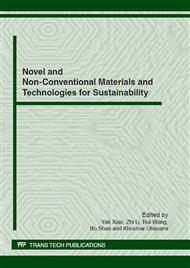p.669
p.677
p.683
p.689
p.695
p.705
p.710
p.717
p.724
Effect of Timber Grain Orientation on Bonded-In Rod Connection Systems
Abstract:
Presented in this paper are the results of practical tests to determine some key material properties of engineered timber, in particular glulam. The results are discussed and compared with three known failure criterion, Hankinsons formula, The Tsai-Wu criterion and Maximum stress theory to determine if they are appropriate models for predicting the properties of glulam. The properties considered have been chosen with respect to a connection system for use in folded plate structures utilizing embedded rods. This paper considers the effect of the timber grain angle on the compression, tensile and steel dowel rod pull-out strengths. The test data shows that Hankinson and Tsai-Wu are both good models to predict both the compression and tensile behavior of engineered timber products at non-tangential angles, whereas maximum stress theory had less correlation and over predicts the results and would not be recommended for use in engineered timber materials.
Info:
Periodical:
Pages:
695-704
Citation:
Online since:
June 2012
Authors:
Keywords:
Price:
Сopyright:
© 2012 Trans Tech Publications Ltd. All Rights Reserved
Share:
Citation:


